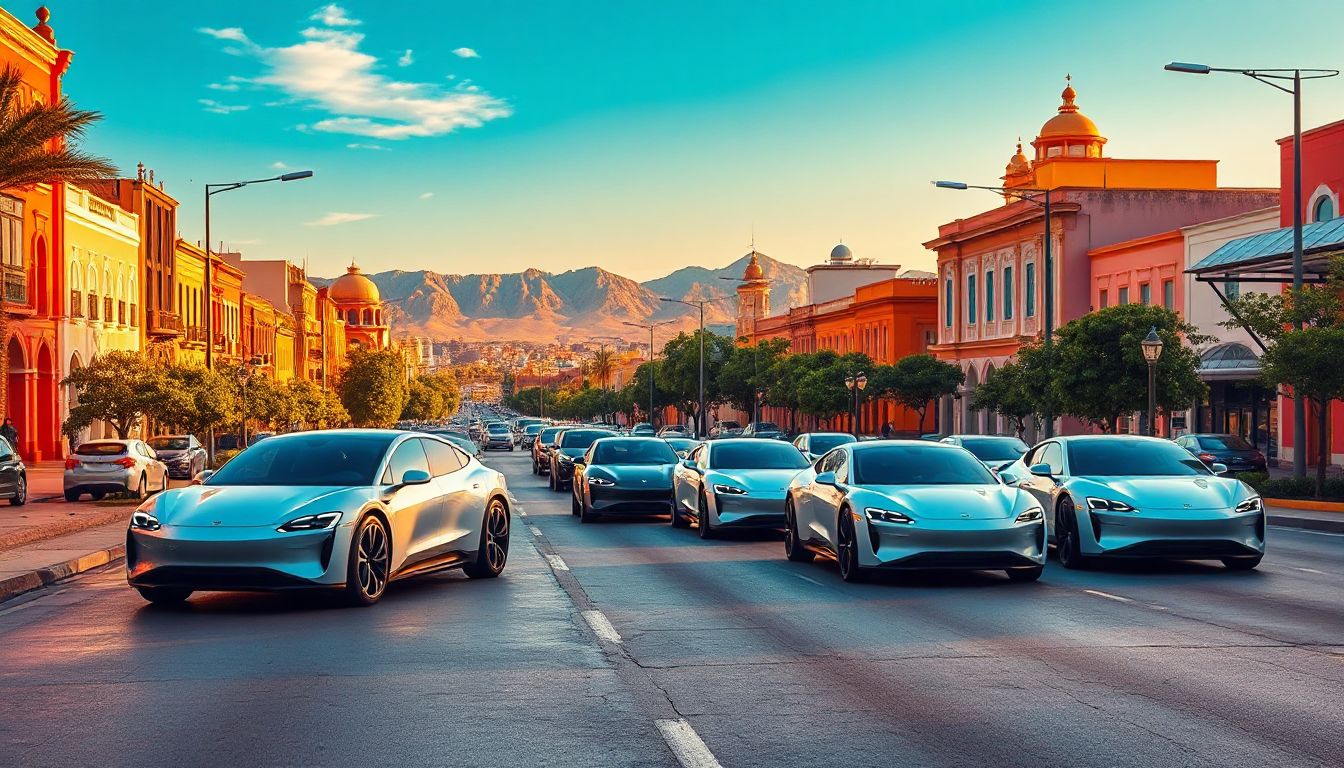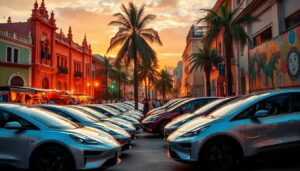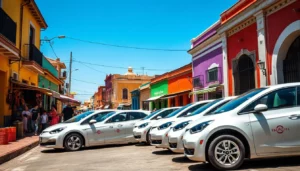Introduction
Mexico is joining the world’s shift towards electric cars. More people want cleaner, cheaper, and smarter rides. The government is also pushing for the switch, offering new incentives and rules. That means the market for electric vehicles (EVs) in Mexico is growing fast. We’ll look at the latest models, infrastructure efforts, and what the future holds for EVs in Mexico.
The Mexican Electric Vehicle Market: An Overview
Current Market Landscape
Right now, electric cars in Mexico are gaining ground but still make up a small part of the total vehicle market. Many brands, from international giants to local startups, now sell EVs here. Popular models from Nissan, Volkswagen, and Tesla are leading the charge. Still, challenges like price and charging options keep adoption steady.
Government Incentives and Policies
Mexico is making it easier to buy EVs through financial benefits. Buyers can get tax rebates and discounts on import fees. New laws also aim to cut pollution by forcing stricter emissions rules. The government plans to build more charging points and support clean transportation. This creates a strong push for people to switch to electric.
Consumer Awareness and Adoption Drivers
Most Mexicans are curious about electric cars, especially as fuel prices rise and environmental concerns grow. As charging stations appear in cities and neighborhoods, many see electric vehicles as a smart choice. The promise of lower running costs and eco-friendliness is convincing more drivers to go electric.
New Electric Car Models Available in Mexico
Recent Launches and Announcements
Many international brands just launched new EV models in Mexico. For example, Volkswagen introduced the ID.4, while Tesla’s Model 3 and Model Y remain popular. Local automakers are also joining in, with fresh options like the Tata Nexon EV. Excitingly, more models are expected soon, including small compact cars and larger SUVs.
Features and Innovations
Advanced technology makes these cars stand out. You’ll find longer battery life, quick-charging times, and options for autonomous driving. Some models now include solar roofs or enhanced connectivity features. Cars are becoming more adaptable for Mexican roads — with features like high clearance for rough terrain and better air conditioning systems.
Price Range and Value Proposition
Compared to traditional gas models, EVs can seem pricier. However, reduce fuel costs and maintenance make up for the initial investment. Many automakers are offering financing plans, and government discounts help make EVs more affordable. In the long run, electric cars can save consumers hundreds of dollars annually.
Infrastructure Development for Electric Vehicles in Mexico
Charging Station Expansion
Mexico’s charging network is growing each year. Big cities now have dozens of public chargers, and private companies are building more at shopping malls and parking lots. Rapid charging stations are also on the rise, letting drivers recharge in less than 30 minutes. At-home charging units are becoming more common and easier to install.
Partnerships and Investment
Major collaborations tie together government agencies, automakers, and private firms. These partnerships aim to boost charging infrastructure and promote EV use. Investment in Mexico’s EV sector exceeds hundreds of millions of dollars, with plans to develop more stations across the country.
Challenges and Opportunities
While cities are well-connected, rural areas still lack charging options. This limits EV use outside urban centers. However, this gap creates opportunities for entrepreneurs and investors to build new charging stations or provide mobile charging services, expanding access nationwide.
Environmental and Economic Impact of Electric Cars in Mexico
Reduction in Emissions and Air Quality Improvements
Switching to electric cars can cut harmful emissions significantly. Studies show EVs in Mexico could reduce greenhouse gases by tens of thousands of tons each year. As a result, urban air quality gets better, helping public health and reducing respiratory issues.
Job Creation and Economic Growth
Growing EV demand opens jobs in manufacturing, repairs, and infrastructure. Mexico could soon become a leader in regional EV production, attracting more investments. This shift helps local economies while supporting environmental goals.
Challenges and Barriers
Limited supply chains for raw materials like lithium and cobalt can slow down production. Some consumers hesitate due to unfamiliarity or higher upfront costs. Market readiness depends on continued policy support and education about EV benefits.
Expert Insights and Future Outlook
Industry Expert Quotes and Forecasts
Many analysts believe the Mexican EV market will grow at an annual rate of over 20%. Experts say new technologies, lower prices, and better infrastructure will speed that up. Environmental professionals see EVs as crucial to meeting Mexico’s climate commitments.
Strategic Recommendations for Stakeholders
Consumers should look into incentives and ask about long-term savings before buying. Policymakers need to keep investing in charging stations and promote awareness campaigns. Automakers must continue launching affordable, reliable models tailored for Mexico’s landscape.
Conclusion
Electric cars are here to stay in Mexico. The industry is growing fast, fueled by new models, better infrastructure, and strong government support. As more drivers switch, Mexico can reduce pollution and create new jobs. Everyone — from consumers to policymakers — has a role in driving this green revolution. Now’s the time to embrace electric mobility and be part of Mexico’s sustainable future.




